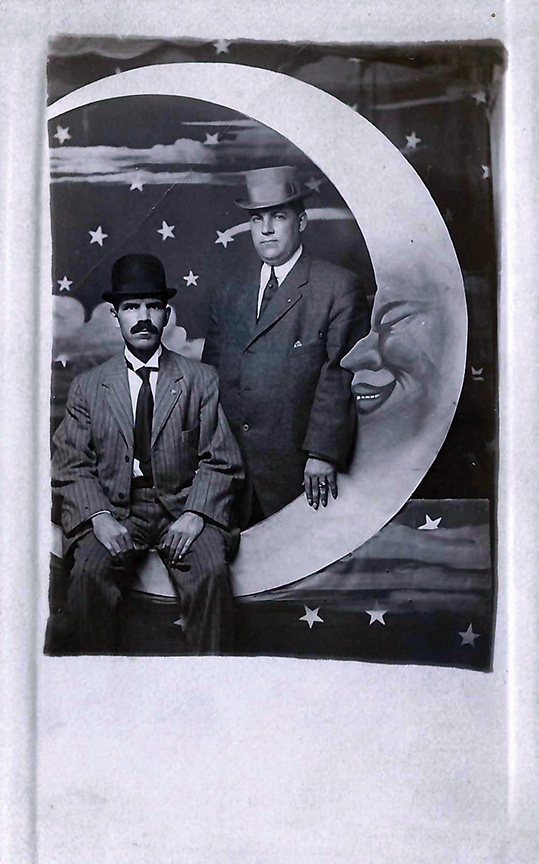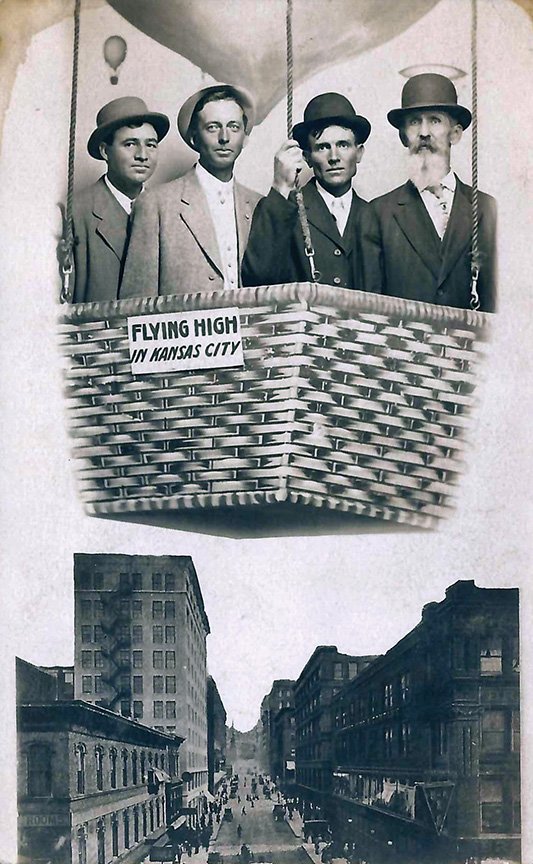
Michael Bushnell
Publisher
This week, in theme with our Remember This column on a novelty transistor radio, we’re featuring another novelty communication tool from back in the day, the novelty Real Photo, picture postcard.
Picture postcards reached their zenith during the early to mid-20th century, mostly earlier than 1915. They remained a popular communication tool, however, through WWII and beyond, right up through the mid 1950’s when more modern technology made it easier to stay in touch.
Immediately following the turn of the 20th century, photography studios were common on the streets of downtown Kansas City. Moon Photo Studio at 17 E. 12th St., North American Postcard Company and the Curio Post Card Studio at 112 E 8th St. were just three photography studios downtown that specialized in novelty-type picture postcards.
The photo process was often very simple, with a decorated backdrop and props, or could be as involved as gluing negatives together in the dark room. In this case, the three men probably stood in a mock basket in the studio in front of a backdrop showing other balloons in the air. The basket was then superimposed over the street scene, in this case Petticoat Lane, to give the illusion of flying over the city in a hot-air balloon with the placard “Flying High in Kansas City,” tacked to the basket.
W. H. “Dad” Martin who bought the Corwin Studio in Ottawa, Kan., was considered the father of exaggeration postcards that featured huge vegetables or animals and miniscule human beings in the same picture. Martin sold his studio to two enterprising young photographers who moved it to Kansas City and renamed it the North American Postcard Company, specializing in Real Photo picture postcards.




















